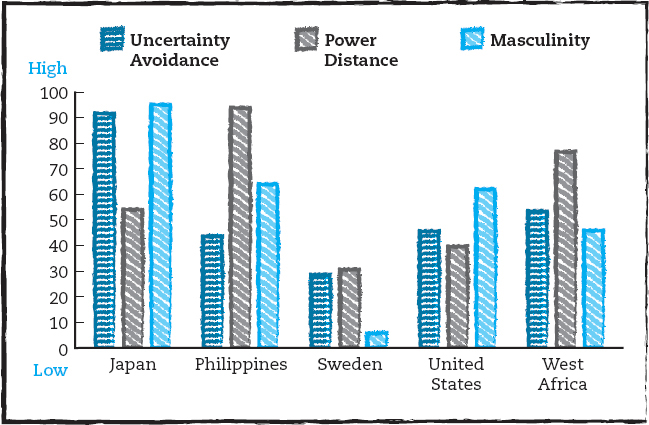Comfort with Uncertainty
Comfort with Uncertainty
Page 57
Cultures also differ in the degree of anxiety that individual members tend to feel about the unknown. All cultures, to some degree, adapt their behaviors to reduce uncertainty and risk, a process called uncertainty avoidance. Cultures that are more anxious about the unknown are said to be high uncertainty avoidance cultures; people from these cultures strive to minimize risk and uncertainty. In high uncertainty avoidance cultures (such as those of Greece, Peru, and Japan), communication is usually governed by formal rules to satisfy a need for absolute truth and stability, with little tolerance for differences of opinion. By following social rules and minimizing dissent, they reduce uncertainty and anxiety in prescribed communication situations (Gudykunst, 1993).
On the other hand, cultures with a higher tolerance for risk and ambiguity (like those found in Denmark, Ireland, and the United States) are considered low uncertainty avoidance cultures (Samovar, Porter, & McDaniel, 2009). Their lower level of anxiety about the unknown means that these cultures are comfortable with a variety of communication styles, are more tolerant of differences of opinion, and have fewer formal rules for behavior (Hoeken et al., 2003) (see Figure 3.2).

Source: Adapted from Hofstede, 1984, 2001.